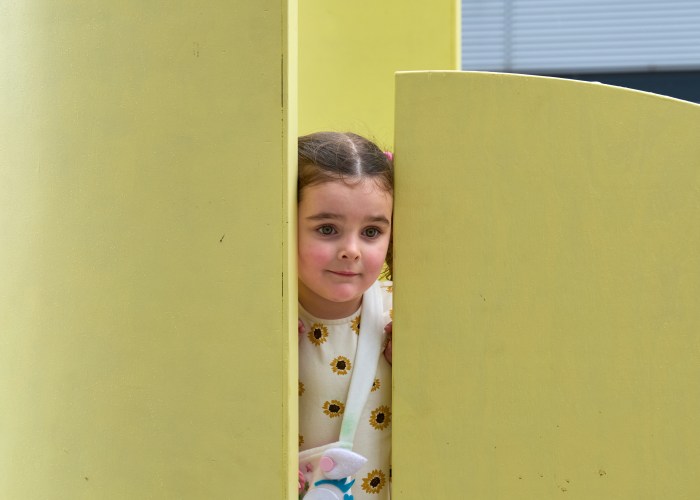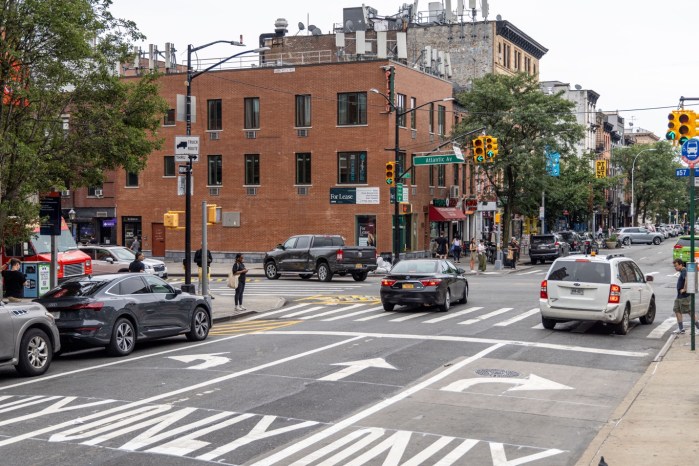Normal Rockwell’s hyper-idealized vision of America is brought back to reality via the photos he used for inspiration in a new exhibit at the Brooklyn Museum.
“Norman Rockwell: Behind the Camera” reveals an illuminating window into the creative process employed by Rockwell, who remains one of the most-mocked artists of the 20th century.
Take, for example, his classic “Girl at Mirror,” which depicts a young girl looking at herself with a magazine on her lap opened to a photo of the movie star Jane Russell.
The photo on which the painting is based doesn’t have the magazine — but in Rockwell’s version, the celebrity is not only front and center, but the artist added in a cast-aside doll for a forward-looking statement on growing up surrounded by images of fame.
Another iconic painting shows a hulking cop gently conversing at a diner with a kid who has run away from home. Beside it are a dozen photos with different elements — the cop, the kid, the cook at the diner — that Rockwell combined to make the painting.
Almost all of the photos have a sense of exuberance to them — these were average folks being posed by one of the most popular artists of the time, and photographed by renowned professionals like Gene Pelham and Louis Lamone.
And Rockwell relished his subjects’ enthusiasm. In fact, he preferred using friends, family and neighbors as models instead of professionals because of their natural spontaneity.
They were clearly having a good time, and so was Rockwell, who occasionally modeled and inserted himself in his paintings, too.
The finished product often ended up on the cover of the Saturday Evening Post, which are on display as well. The magazines only enrich the sense of history, as they feature headlines like “Humphrey, the Man Ike Trusts with the Cash,” and “Traitor Klaus Fuchs: He Gave Stalin the A-Bomb.”
Taken together, the photos and paintings are fascinating as a time capsule and undeniably charming.

But as a history lesson, “Behind the Camera” is woefully incomplete.
In its effort to humanize Rockwell’s portraits of Americana, the exhibit serves up a stark reminder that “Rockwellian America” was almost entirely devoid of black people. Kanye West — where were you when we needed you?
Appropriately, literature accompanying the exhibit quotes documentary director Ken Burns — the Norman Rockwell of film, if you will — who puts his stamp of approval on the artist. “So many of the moments we see as impossibly idealized versions of us are in fact us,” he says.
Seriously? It’s doubtful any Brooklynite from any era would identify with such white-bread Americana.
But is Rockwell to blame? He was an artist-for-hire creating works meant for mass consumption, mainly through a conservative magazine. There was little appetite in that environment for depictions of racial discord — or racial harmony, for that matter. That, in and of itself, is worth remembering today.
The final, small room of the exhibit highlights the twilight of Rockwell’s career, when he began — at last — to address the social upheaval of the 1960s. Did he have a crisis of conscience, or was it that his new job for Look Magazine simply offered him more freedom?
Rockwell once said he wanted to “paint the big picture, something serious and colossal which will change the world.”
His paintings certainly never changed the world, instead the vast majority of his work depicted America as a certain segment of people wanted to see it.
But that, for all its flaws, is quite compelling enough.

“Norman Rockwell: Behind the Camera,” at the Brooklyn Museum [200 Eastern Pkwy. at Washington Avenue in Prospect Heights, (718) 638-5000], Nov. 19-April 10. Closed Mondays and Tuesdays.























